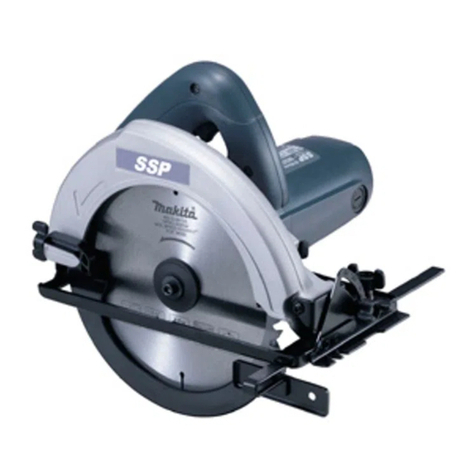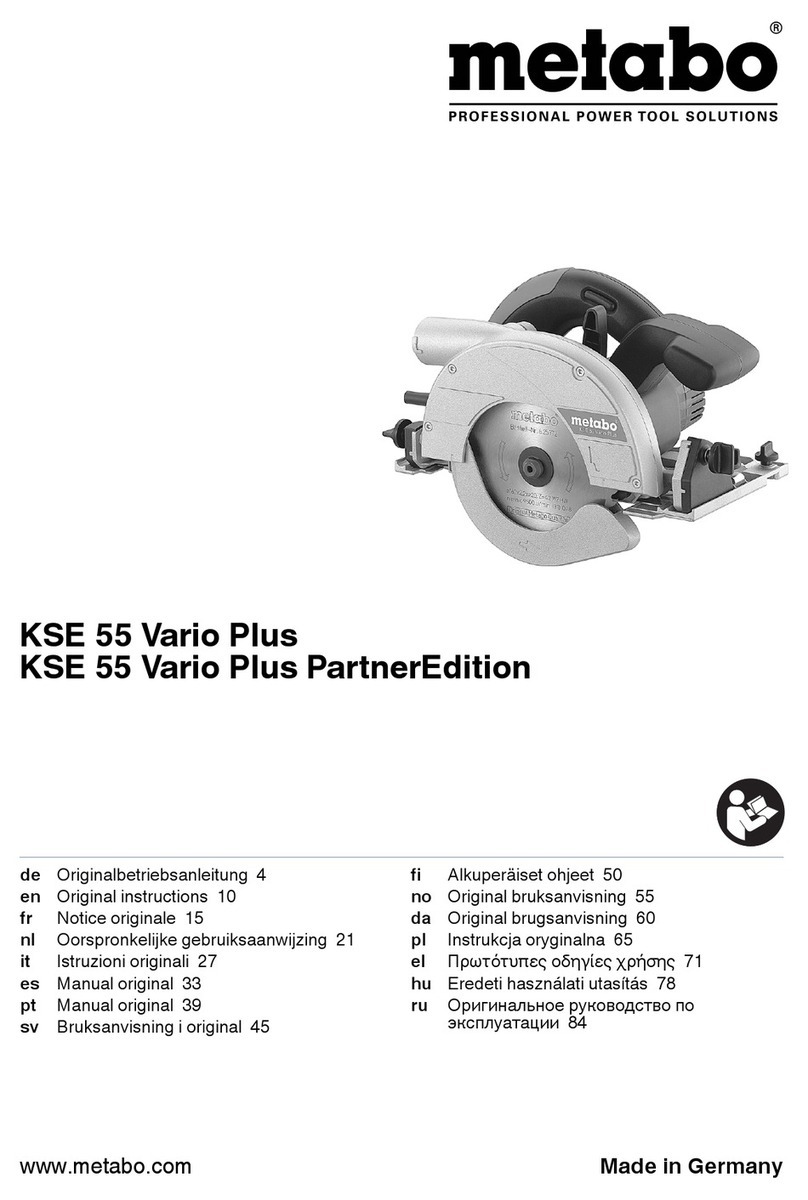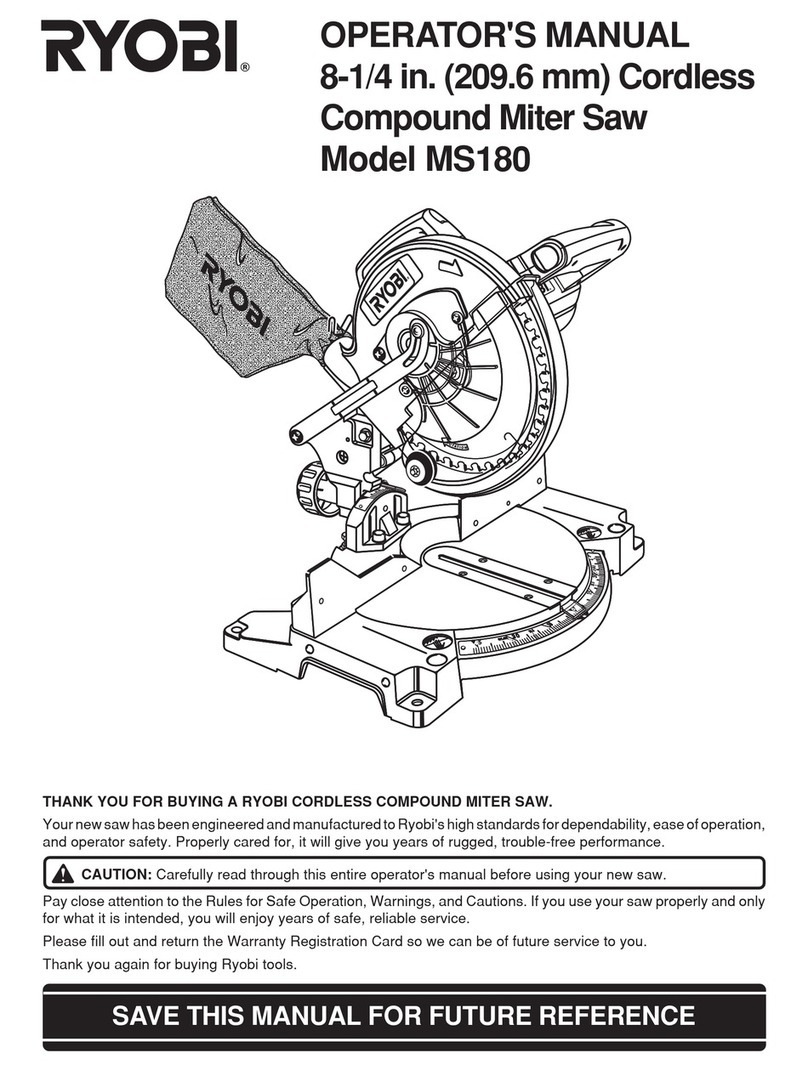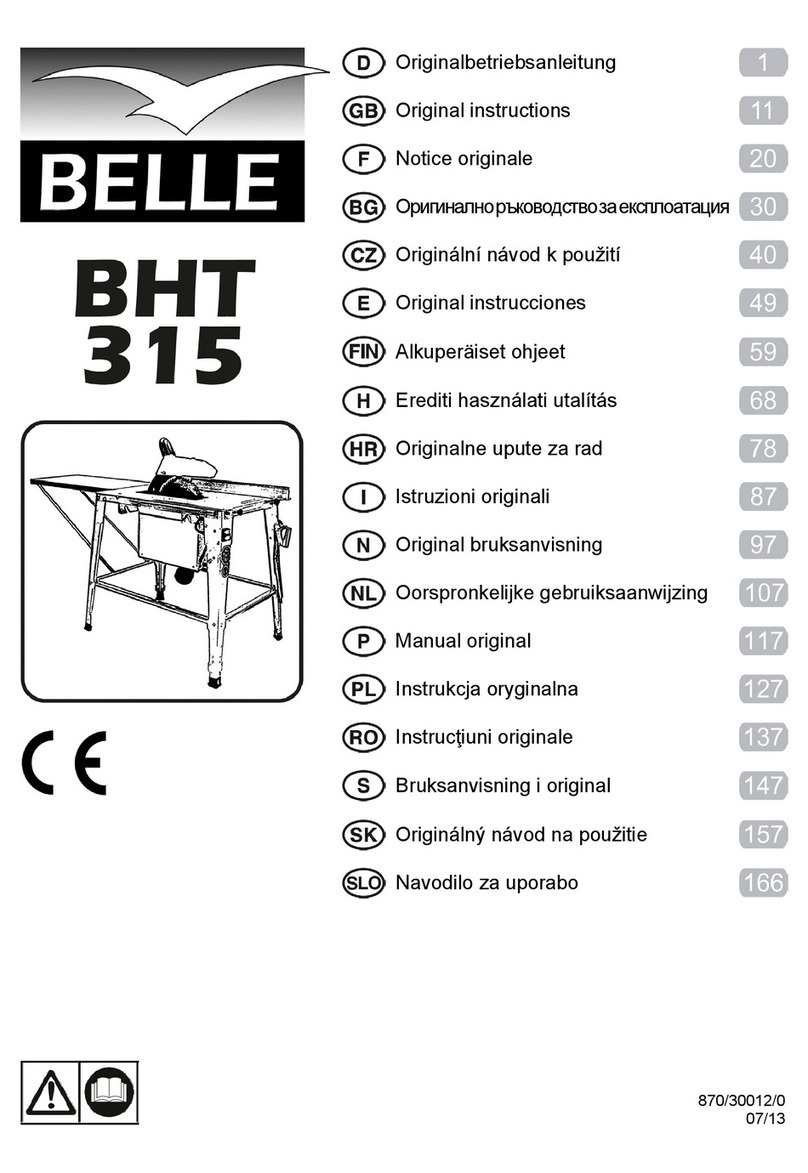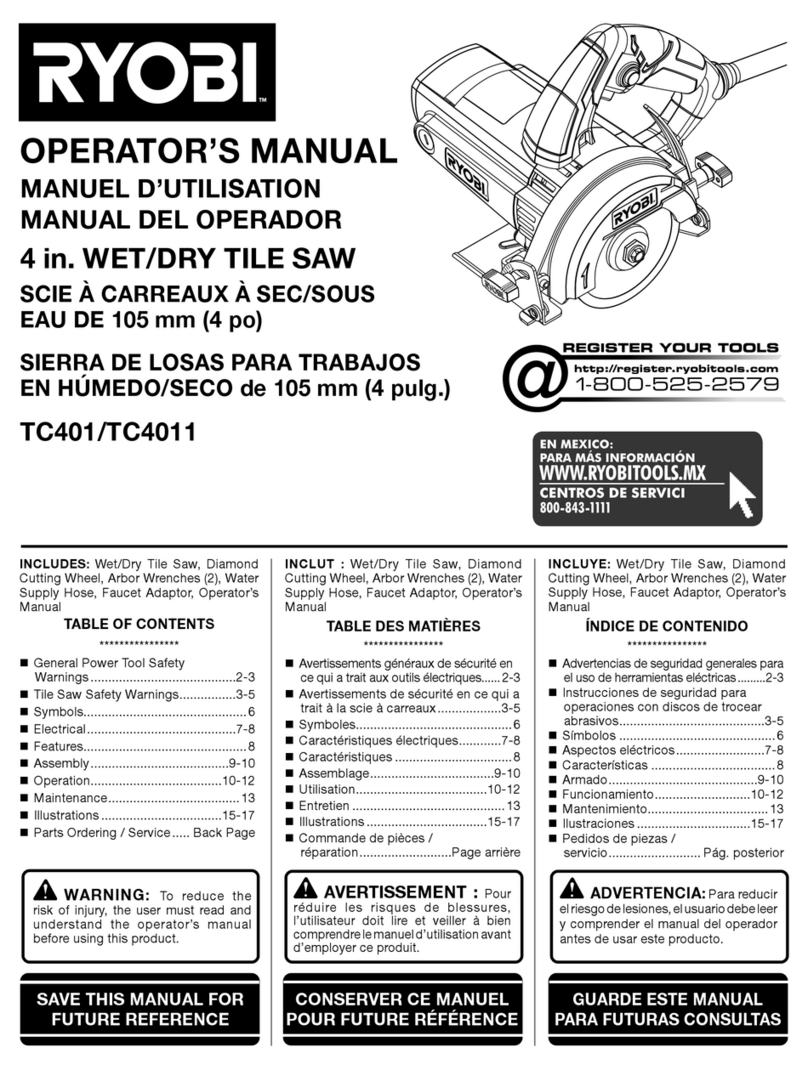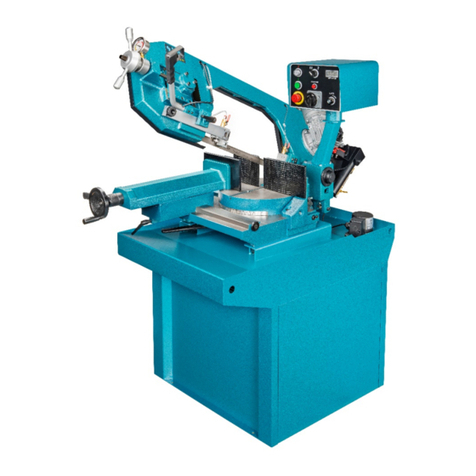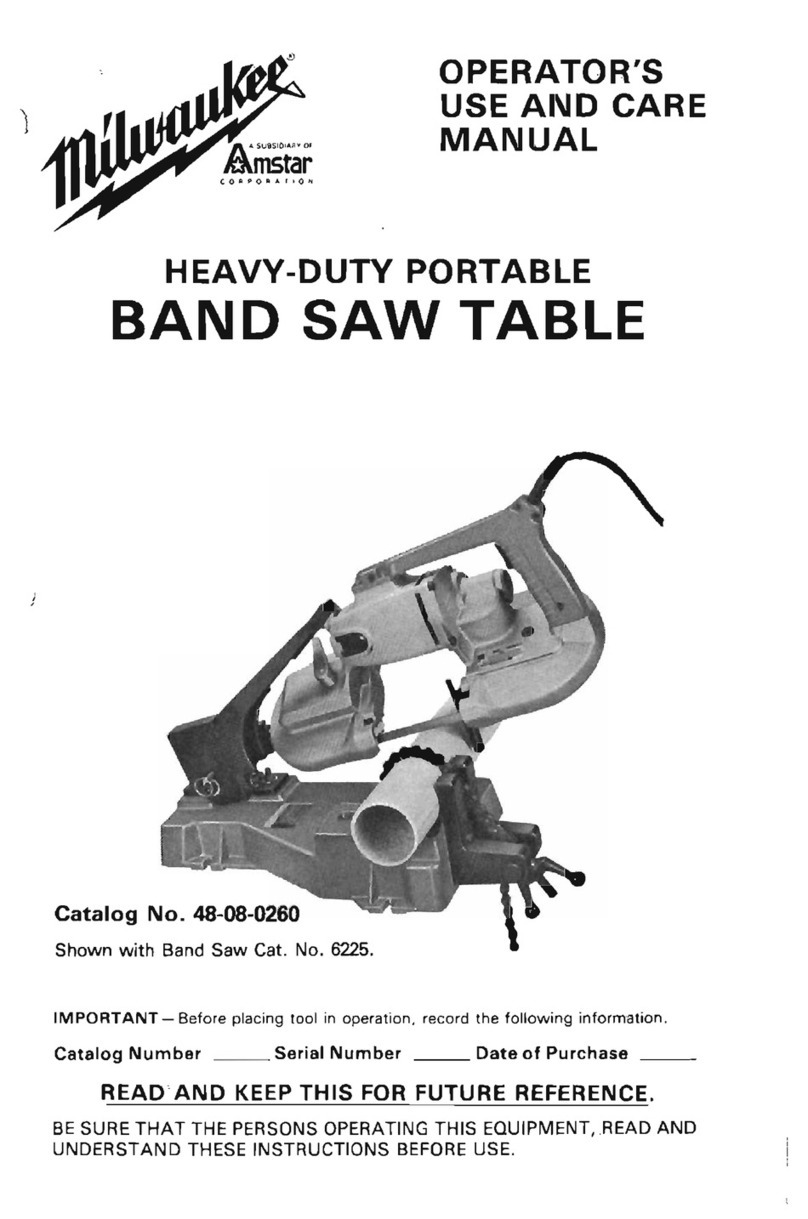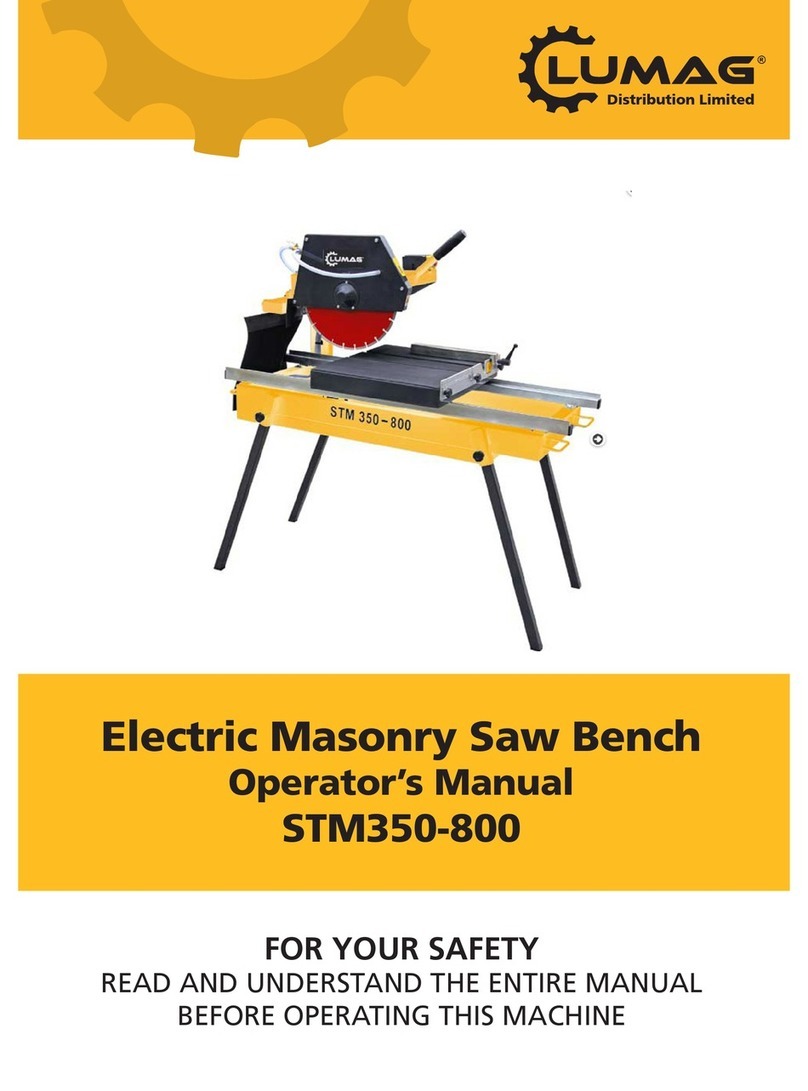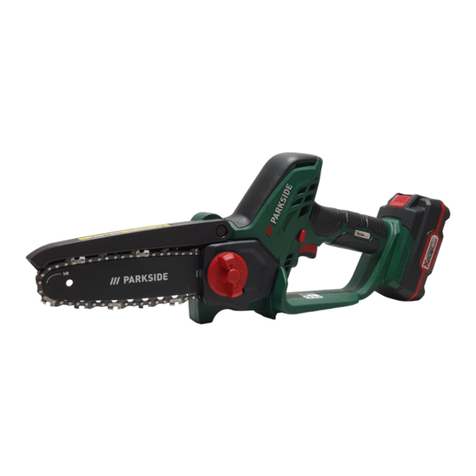DNA TOOLS-00165 User manual

1
INSTRUCTION MANUAL
Cordless Reciprocating Saw
TOOLS-00165/00166
Power tool
EN

2
DESCRIPTION OF THE SYMBOLS
Symbols are used in this manual to attract your attention to possible risks .The safety
symbols and the explication which accompany them must be perfectly understood.
The warning themselves do not prevent the risks and cannot be a substitute for
proper methods of avoiding accidents.
This symbol before a safety comment indicates a precaution a warning or a danger.
Ignoring this warning can led to an accident for yourself or others. TO limit the risk of
injury, fire, or electrocution always apply the recommendations indicated.
WARNING –To reduce the risk of injury, user must read instruction manual.
These symbols indicates the requirement of wearing ear protection, eye protection
and gloves when using the product.
The crossed-out wheeled bin symbol indicates that the item should be disposed of
separately from household waste. The item should be handed in for recycling in
accordance with local environmental regulations for waste disposal. By separating a
marked item from household waste, you will help reduce the volume of waste sent to
incinerators or land-fill and minimize any potential negative impact on human health
and the environment.

3
GENERAL POWER TOOL SAFETY WARNINGS
WARNING Read all safety warnings, instructions,
illustrations and specifications provided with this power
tool. Failure to follow all instructions listed below may result in electric
shock, fire and/or serious injury.
Save all warnings and instructions for future reference.
The term "power tool" in the warnings refers to your mains-operated (corded) power
tool or battery-operated (cordless) power tool.
1. Work area safety
a) Keep work area clean and well lit. Cluttered or dark areas invite accidents..
b) Do not operate power tools in explosive atmospheres, such as in the
presence of flammable liquids, gases or dust. Power tools create sparks
which may ignite the dust or fumes.
c) Keep children and bystanders away while operating a power tool.
Distractions can cause you to lose control.
2. Electrical safety
a) Power tool plugs must match the outlet. Never modify the plug in any
way. Do not use any adapter plugs with earthed (grounded) power tools.
Unmodified plugs and matching outlets will reduce risk of electric shock.
b) Avoid body contact with earthed or grounded surfaces, such as pipes,
radiators, ranges and refrigerators. There is an increased risk of electric
shock if your body is earthed or grounded.
c) Do not expose power tools to rain or wet conditions. Water entering a
power tool will increase the risk of electric shock.
d) Do not abuse the cord. Never use the cord for carrying, pulling or
unplugging the power tool. Keep cord away from heat, oil, sharp edges
or moving parts. Damaged or entangled cords increase the risk of electric
shock.
e) When operating a power tool outdoors, use an extension cord suitable
for outdoor use. Use of a cord suitable for outdoor use reduces the risk of
electric shock.
f) If operating a power tool in a damp location is unavoidable, use a
residual current device (RCD) protected supply. Use of an RCD reduces
the risk of electric shock.
NOTE: The term “residual current device (RCD)” can be replaced by the term
“ground fault circuit interrupter (GFCI)” or “earth leakage circuit breaker
(ELCB)”.
3. Personal safety
a) Stay alert, watch what you are doing and use common sense when
operating a power tool. Do not use a power tool while you are tired or
under the influence of drugs, alcohol or medication. A moment of
inattention while operating power tools may result in serious personal injury.
b) Use personal protective equipment. Always wear eye protection.
Protective equipment such as a dust mask, non-skid safety shoes, hard hat or
hearing protection used for appropriate conditions will reduce personal
injuries.
c) Prevent unintentional starting. Ensure the switch is in the off-position
before connecting to power source and/or battery pack, picking up or
carrying the tool. Carrying power tools with your finger on the switch or
energising power tools that have the switch on invites accidents.
d) Remove any adjusting key or wrench before turning the power tool on. A
wrench or a key left attached to a rotating part of the power tool may result in
personal injury.

4
e) Do not overreach. Keep proper footing and balance at all times. This
enables better control of the power tool in unexpected situations.
f) Dress properly. Do not wear loose clothing or jewellery. Keep your hair
and clothing away from moving parts. Loose clothes, jewellery or long hair
can be caught in moving parts.
g) If devices are provided for the connection of dust extraction and
collection facilities, ensure these are connected and properly used. Use
of dust collection can reduce dust-related hazards.
h) Do not let familiarity gained from frequent use of tools allow you to
become complacent and ignore tool safety principles. A careless action
can cause severe injury within a fraction of a second.
4. Power tool use and care
a) Do not force the power tool. Use the correct power tool for your
application. The correct power tool will do the job better and safer at the rate
for which it was designed.
b) Do not use the power tool if the switch does not turn it on and off. Any
power tool that cannot be controlled with the switch is dangerous and must be
repaired.
c) Disconnect the plug from the power source and/or remove the battery
pack, if detachable, from the power tool before making any adjustments,
changing accessories, or storing power tools. Such preventive safety
measures reduce the risk of starting the power tool accidentally.
d) Store idle power tools out of the reach of children and do not allow
persons unfamiliar with the power tool or these instructions to operate
the power tool. Power tools are dangerous in the hands of untrained users.
e) Maintain power tools and accessories. Check for misalignment or
binding of moving parts, breakage of parts and any other condition that
may affect the power tool’s operation. If damaged, have the power tool
repaired before use. Many accidents are caused by poorly maintained power
tools.
f) Keep cutting tools sharp and clean. Properly maintained cutting tools with
sharp cutting edges are less likely to bind and are easier to control.
g) Use the power tool, accessories and tool bits etc. in accordance with
these instructions, taking into account the working conditions and the
work to be performed. Use of the power tool for operations different from
those intended could result in a hazardous situation.
h) Keep handles and grasping surfaces dry, clean and free from oil and
grease. Slippery handles and grasping surfaces do not allow for safe handling
and control of the tool in unexpected situations.
5. Battery tool use and care
a) Recharge only with the charger specified by the manufacturer. A charger
that is suitable for one type of battery pack may create a risk of fire when used
with another battery pack.
b) Use power tools only with specifically designated battery packs. Use of
any other battery packs may create a risk of injury and fire.
c) When battery pack is not in use, keep it away from other metal objects,
like paper clips, coins, keys, nails, screws or other small metal objects,
that can make a connection from one terminal to another. Shorting the
battery terminals together may cause burns or a fire.
d) Under abusive conditions, liquid may be ejected from the battery; avoid
contact. If contact accidentally occurs, flush with water. If liquid contacts
eyes, additionally seek medical help. Liquid ejected from the battery may
cause irritation or burns.

5
e) Do not use a battery pack or tool that is damaged or modified. Damaged
or modified batteries may exhibit unpredictable behaviour resulting in fire,
explosion or risk of injury.
f) Do not expose a battery pack or tool to fire or excessive temperature.
Exposure to fire or temperature above 130 °C may cause explosion.
NOTE The temperature „130 °C“ can be replaced by the temperature „265
°F“.
g) Follow all charging instructions and do not charge the battery pack or
tool outside the temperature range specified in the instructions. Charging
improperly or at temperatures outside the specified range may damage the
battery and increase the risk of fire.
6. Service
a) Have your power tool serviced by a qualified repair person using only
identical replacement parts. This will ensure that the safety of the power tool
is maintained.
b) Never service damaged battery packs. Service of battery packs should only
be performed by the manufacturer or authorized service providers.
SAFETY INSTRUCTIONS
Use clamps or other practical way to secure and support the workpiece to a
stable platform. Holding the work by hand or against your body is unstable and
may lead to loss of control.
Do not force tool. Use the correct tool for your application. The correct tool will
do the job better and safer at the rate for which it is designed.
Do not use tool if switch does not turn it on or off. Any tool that cannot be
controlled with the switch is dangerous and must be repaired.
Disconnect the plug from the power source before making any adjustments,
changing accessories, or storing the tool. Such preventive safety measures
reduce the risk of starting the tool accidentally.
Store idle tools out of reach of children and other untrained persons. Tools
are dangerous in the hands of untrained users.
Maintain tools with care. Keep cutting tools sharp and clean. Properly
maintained tools, with sharp cutting edges are less likely to bind and are easier to
control.
Check for misalignment or binding of moving parts, breakage of parts, and
any other condition that may affect the tools operation. If damaged, have the
tool serviced before using.
Many accidents are caused by poorly maintained tools.
Use only accessories that are recommended by the manufacturer for your
model.
Accessories that may be suitable for one tool, may become hazardous when used
on another tool.
INTENDED USE
The machine is intended for sawing wood, plastic, metal and building materials while
resting firmly on the workpiece. It is suitable for straight and curved cuts.

6
LIST OF MAIN PART
1. Holding bracket
2. Quick-action blade clamp
3. Release button (holding bracket)
4. Battery indicator
5. Safety button
6. On/off-switch
7. Battery (not included)
8. Blade
TECHNICAL SPECIFIATIONS
Power
12 V
Speed
0-2700/min
Stroke length
20mm
Max. cutting performance
Wood: 80mm
Noise
Sound pressure level
84,3 dB(A) K=3 dB(A)
Sound power level
95,3 dB(A) K=3 dB(A)
Vibration level ah,WB
9,154 m/s² k= 1,5 m/s²
NOISE/VIBRATION INFORMATION
Measured sound values determined according to EN 62841.
Wear hearing protection!
Vibration total values (triax vector sum) determined according to EN 62841:
The vibration emission level given in this information sheet has been measured in
accordance with a standardized test given in EN 62841 and may be used to compare
one tool with another.
It may be used for a preliminary assessment of exposure.
The declared vibration emission level represents the main applications of the tool.
However if the tool is used for different applications, with different accessories or
poorly maintained, the vibration emission may differ. This may significantly increase
the exposure level over the total working period.
An estimation of the level of exposure to vibration should also take into account the
times when the tool is switched off or when it is running but not actually doing the job.
This may significantly reduce the exposure level over the total working period.
Identify additional safety measures to protect the operator from the effects of
vibration such as: maintain the tool and the accessories, keep the hands warm,
organisation of work patterns.
Vibration risk limitation suggestions:
1) Wear glove during operation
2) Limit operating time and shorten trigger time.

7
OPERATION
Before use
Remove any packing material and loose parts from unit.
Check the accessories before use. It should be fit with the machine and your purpose.
If the machine is new, the battery must first be charged.
Attention!
After long time storage, the battery capacity will be reduce.
Battery is housed in the handle, press the battery retention clips, and remove battery
from handle.
A substantial drop in operating period per charge indicates that the battery is worn
out and must be replaced.
Battery charger
The power voltage supply must conform to that specified on the rating plate of the
rapid charger.
Always inspect battery charger, cord and plug before use.
Always have damage repaired by a qualified professional.
Protect battery charger against humidity and operate only in dry areas.
The supplied charger is suitable for charging batteries only.
Charging the battery
To start the charging process plug the charger into the battery, then plug in the
battery charger to the main
The battery and charger become warm during the charging process, this is normal.
After termination of the charging process, pull charger plug out of mains socket
unplug charger from battery.
LED indicator on charger: red indicator: charging.
green indicator: charge finished.
About the charger
Disconnect the feeding before connecting or disconnecting the battery
The charger must be used only with rechargeable battery. Never use un-
rechargeable battery.
Do not expose the charger to rain or water
On/Off Trigger
To switch on: press safety button (5) first and hold, then press on/off switch.
To switch off: release the on/off switch
To install cutting blade:
1.Rotate the blade clamp and keep
2.Insert the blade
3.Loose the blade clamp
4.Pull on blade to make sure it is securely fastened.
Battery retention clip

8
Inserting/Removing the holding bracket
Inserting the holding bracket
Press the release button
Slide the holding bracket over the guides of the shoe into the tool.
Lock the release button
Removing the holding bracket
Press the release and pull the holding bracket forward and out of the guide.
Working without holding bracket
When cutting thicker branches or sawing wood/plastic materials, working WITHOUT
holding bracket. The piece to be sawed must touch the shoe. Use a rocking motion
when cutting round pieces.
Using the holding bracket
Move the saw, applying slight downward pressure.
General Cutting:
Hold your saw firmly in front and clearly away from you. Make sure saw blade is clear
of any foreign material. Be sure material to be cut is held firmly. Small work pieces
should be securely clamped in a vice or with clamps to the work bench or table. Mark
the line of cut clearly. Press the switch to start the cutting action. DO NOT FORCE.
Use only enough pressure to keep the saw cutting. Allow the blade and saw to do the
work.
Metal Cutting:
When cutting metallic material with this tool, be sure to use a sharp blade designed
for this purpose. We recommend lubricating the cutting surface with cutting oil to
avoid heat buildup. Follow general cutting procedure on previous page. Do not force

9
tool. Use only enough pressure to keep the saw cutting.
Plunge Cutting
Clearly mark the line of cut. From a convenient starting point within the cut out area,
place the tip of the blade over that point with saw parallel to the line of cut. Slowing
lower the saw until the button edge of the shoe rests on the workpiece. Start the saw
and allow it to attain full speed. With the saw resting on the shoe, slowly let the saw
forward to lower the blade onto the cut line. Continue this motion until the saw blade
is perpendicular to the workpiece.
WARNING: Make sure the blade does not touch the workpiece until the saw
reaches its max speed. Failure to comply could cause loss of control and result in
serious injury.
MAINTENANCE
Always remove the battery before carrying out any work on the machine.
Care and cleaning
Keep the ventilation openings clear and clean the product regularly. Clean the
housing only with a damp cloth-do not uses any solvents! Dry thoroughly afterwards.
Caution!
If something unusual occurs during use, switch off the tool and remove the battery.
Inspect and repair the tool before using it again. Repair of the tool must only be
carried out by a qualified repair technician.
Repair or maintenance by unqualified personnel can lead to a risk of injury.
Use only identical spare parts for repairing a tool.
Caution!
Ensure that the batteries are charged using the correct charger recommended by the
manufacturer.
Attention!
After long time storage, the battery capacity will be reduce.
In order to maintain battery capacity, we recommend that only store full charged
batteries and top-up the charge from time to time. They should be stored in a dry and
frost-free place, the ambient temperature should not exceed 40 0C.
STORING
Store the machine, operating instructions and where necessary the accessories in
the original packaging. In this way you will always have all the information and parts
ready to hand.
Pack the device well or use the original packaging in order to avoid transit damage.
Always keep the machine in dry place.
This manual suits for next models
1
Table of contents
